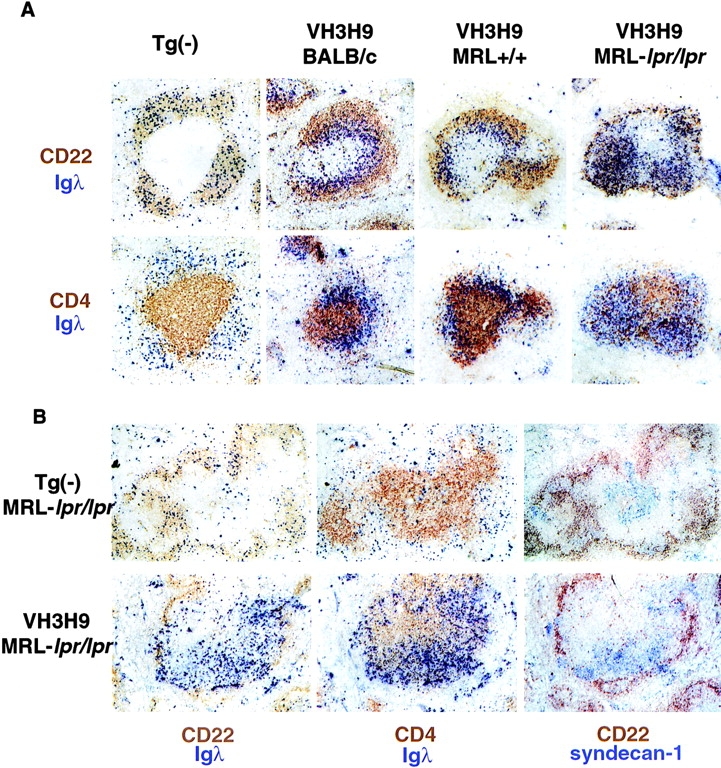Figure 4.

Localization of Igλ+ B cells. (A) Spleen sections from Tg−, VH3H9 BALB/c, VH3H9 MRL+/+, and VH3H9 MRL-lpr/lpr mice were stained with Abs against (top) CD22 and Igλ or (bottom) CD4 and Igλ. In Tg− mice of all three backgrounds, the Igλ+ cells are scattered throughout the B cell follicle. The follicle shown in the figure is from a Tg− MRL+/+ spleen. Igλ+ cells in VH3H9 MRL+/+ mice, like those in VH3H9 BALB/c, accumulate at the T–B interface. However, the VH3H9/λ B cells in MRL-lpr/lpr mice are found in the B cell follicle. Interestingly, CD4+ cells are also scattered in the B cell area with the λ+ B cells. Mice shown are 5 wk of age. (B) Spleen sections from (top) Tg− MRL-lpr/lpr and (bottom) VH3H9 MRL-lpr/lpr mice stained with Abs against (left) CD22 and Igλ, (middle) CD4 and Igλ, or (right) CD22 and syndecan-1 (AFCs). In the majority of follicles, VH3H9/Igλ AFCs are found in the PALS, although some follicles did not have syndecan-1+ cells. AFCs in Tg− MRL-lpr/lpr mice are also found in the PALS. AFCs are first detectable at 8 wk, and mice shown are 10 wk of age. Original magnification: ×100 (n = 10 mice of each genotype).
